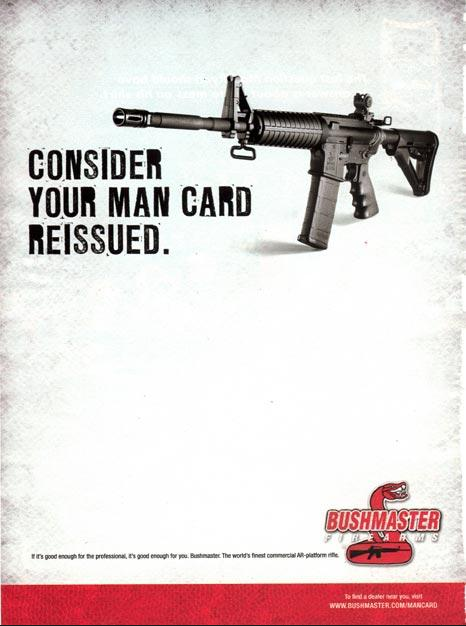Republicans in California eagerly supported increased gun control. Governor Reagan told reporters that afternoon that he saw “no reason why on the street today a citizen should be carrying loaded weapons.” He called guns a “ridiculous way to solve problems that have to be solved among people of good will.” In a later press conference, Reagan said he didn’t “know of any sportsman who leaves his home with a gun to go out into the field to hunt or for target shooting who carries that gun loaded.” The Mulford Act, he said, “would work no hardship on the honest citizen.”
The fear inspired by black people with guns also led the United States Congress to consider new gun restrictions, after the summer of 1967 brought what the historian Harvard Sitkoff called the “most intense and destructive wave of racial violence the nation had ever witnessed.” Devastating riots engulfed Detroit and Newark. Police and National Guardsmen who tried to help restore order were greeted with sniper fire.
A 1968 federal report blamed the unrest at least partly on the easy availability of guns. Because rioters used guns to keep law enforcement at bay, the report’s authors asserted that a recent spike in firearms sales and permit applications was “directly related to the actuality and prospect of civil disorders.” They drew “the firm conclusion that effective firearms controls are an essential contribution to domestic peace and tranquility.”
Political will in Congress reached the critical point around this time. In April of 1968, James Earl Ray, a virulent racist, used a Remington Gamemaster deer rifle to kill Martin Luther King Jr. in Memphis, Tennessee. King’s assassination—and the sniper fire faced by police trying to quell the resulting riots—gave gun-control advocates a vivid argument. Two months later, a man wielding a .22-caliber Iver Johnson Cadet revolver shot Robert F. Kennedy in Los Angeles. The very next day, Congress passed the Omnibus Crime Control and Safe Streets Act of 1968, the first federal gun-control law in 30 years. Months later, the Gun Control Act of 1968 amended and enlarged it.
Together, these laws greatly expanded the federal licensing system for gun dealers and clarified which people—including anyone previously convicted of a felony, the mentally ill, illegal-drug users, and minors—were not allowed to own firearms. More controversially, the laws restricted importation of “Saturday Night Specials”—the small, cheap, poor-quality handguns so named by Detroit police for their association with urban crime, which spiked on weekends. Because these inexpensive pistols were popular in minority communities, one critic said the new federal gun legislation “was passed not to control guns but to control blacks.”
INDISPUTABLY, FOR MUCH of American history, gun-control measures, like many other laws, were used to oppress African Americans. The South had long prohibited blacks, both slave and free, from owning guns. In the North, however, at the end of the Civil War, the Union army allowed soldiers of any color to take home their rifles. Even blacks who hadn’t served could buy guns in the North, amid the glut of firearms produced for the war. President Lincoln had promised a “new birth of freedom,” but many blacks knew that white Southerners were not going to go along easily with such a vision. As one freedman in Louisiana recalled, “I would say to every colored soldier, ‘Bring your gun home.’”
After losing the Civil War, Southern states quickly adopted the Black Codes, laws designed to reestablish white supremacy by dictating what the freedmen could and couldn’t do. One common provision barred blacks from possessing firearms. To enforce the gun ban, white men riding in posses began terrorizing black communities. In January 1866, Harper’s Weekly reported that in Mississippi, such groups had “seized every gun and pistol found in the hands of the (so called) freedmen” in parts of the state. The most infamous of these disarmament posses, of course, was the Ku Klux Klan.
IN RESPONSE TO the Black Codes and the mounting atrocities against blacks in the former Confederacy, the North sought to reaffirm the freedmen’s constitutional rights, including their right to possess guns. General Daniel E. Sickles, the commanding Union officer enforcing Reconstruction in South Carolina, ordered in January 1866 that “the constitutional rights of all loyal and well-disposed inhabitants to bear arms will not be infringed.” When South Carolinians ignored Sickles’s order and others like it, Congress passed the Freedmen’s Bureau Act of July 1866, which assured ex-slaves the “full and equal benefit of all laws and proceedings concerning personal liberty … including the constitutional right to bear arms.”
That same year, Congress passed the nation’s first Civil Rights Act, which defined the freedmen as United States citizens and made it a federal offense to deprive them of their rights on the basis of race. Senator James Nye, a supporter of both laws, told his colleagues that the freedmen now had an “equal right to protection, and to keep and bear arms for self-defense.” President Andrew Johnson vetoed both laws. Congress overrode the vetoes and eventually made Johnson the first president to be impeached.



 For both the Panthers in 1967 and the new NRA after 1977, law-enforcement officers were too often representatives of an uncaring government bent on disarming ordinary citizens.
For both the Panthers in 1967 and the new NRA after 1977, law-enforcement officers were too often representatives of an uncaring government bent on disarming ordinary citizens.


